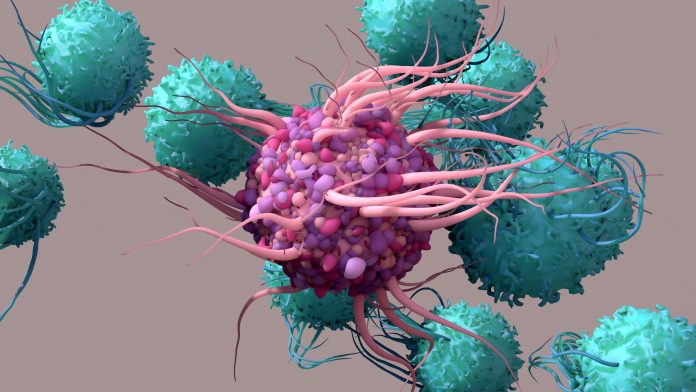
Researchers at the University of New South Wales (UNSW) in Australia have discovered that T cells can effectively destroy cancer cells by using mechanical forces for a more effective attack as part of the body’s immune response against the disease.
Along with the rise in immunotherapy, the adaptive immune response has been an integral part of cancer research in order to find new ways of fighting the disease. A large part of immunotherapy focuses on modifying T cells in order to allow them to fight cancer cells effectively. New research published in Developmental Cell is now revealing a new mechanism behind the T cells’ cytotoxicity.
T-cells are packed with lytic granules containing enzymes called perforins that punch holes in target cells, effectively killing them. Researchers at UNSW have now detected physical forces within the T cells allowing them to grab onto parts of the cancer cell membrane and stretch and bend it in a certain direction making it easier for perforins to punch through the target cell.
“It was very exciting to discover that, in addition to its mechanical tension and biochemical configuration, the shape of the target cell membrane plays an important role in T cell mediated cancer cell killing,” said Daryan Kempe, postdoctoral fellow at UNSW and co-author of the study in a press statement.
The researchers used delicate biophysical assays with several cancer cell lines including human melanoma cells, and T cells isolated from healthy blood donors and mice for their experiments. In order to monitor the T cell and cancer cell interaction as closely as possible the scientists used computer-controlled micropipettes in which the pressure could be controlled independently.
“This technique really allows us to tease apart the whole integrated process because it is such a controlled method. One micropipette picks up a T cell and another picks up a tumor cell, and we bring them into contact on a microscope.”
“We image the entire cytotoxic process. At the same time, because we control and know the exact pressure inside each of the micropipettes, we can also measure the mechanical properties of the cells as they are interacting and engaging in the process,” said Maté Biro, associate professor at UNSW and co-author of the study in a press statement.
The findings add to previous research published in Cell, where scientists also investigated the role of mechanical forces in T cell mediated cytotoxicity. The researchers identified that a stronger mechanical force given off by the specialized immune cell correlated with increased perforin activity and increased killing of target cells.
The researchers conclude that the UNSW study adds important scientific knowledge on the body’s adaptive immune response against cancer, potentially helping them to identify how proteins such as perforins work on a molecular level and may be used in cancer treatments.













